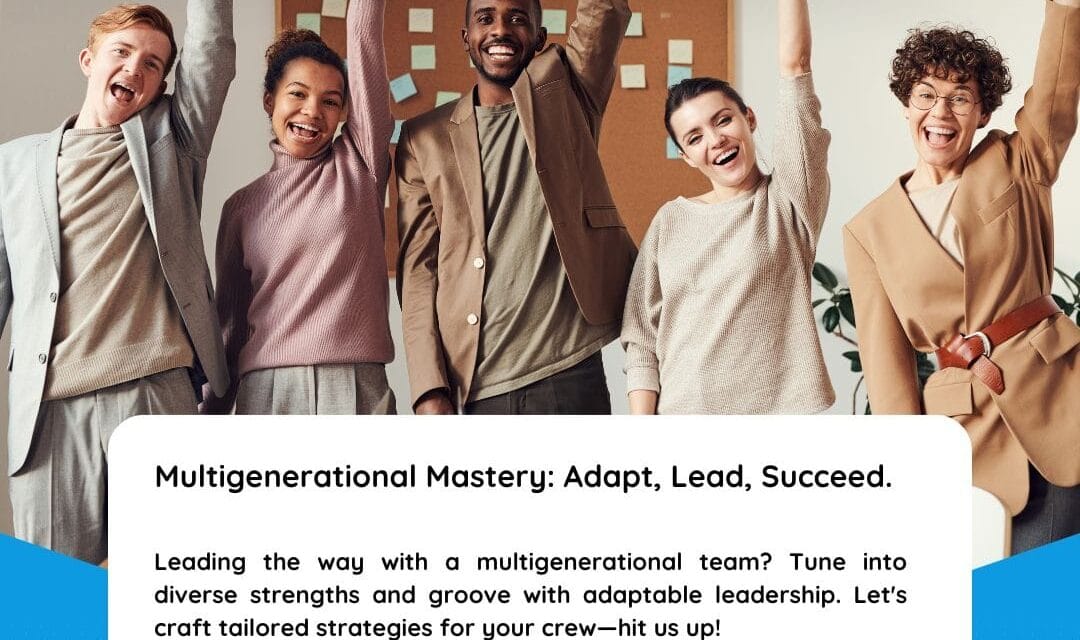In today’s ever-evolving workplace, diversity isn’t just about race, gender, or background – it spans across generations. With Baby Boomers, Gen X, Millennials, and Gen Z working side by side, leaders face the exciting challenge of navigating multigenerational teams. How can leadership styles be tailored to bridge the generation gap and foster collaboration? Let’s explore.

Understanding the Generational Landscape:
Each generation brings its unique strengths, perspectives, and work styles to the table. Baby Boomers are often associated with experience and strong work ethic, Gen X with adaptability, Millennials with tech-savviness and collaboration, and Gen Z with innovation and a fresh perspective. Recognizing these traits is the first step in adapting leadership.
- Customising Communication:
Effective communication is the backbone of successful leadership. Tailor your communication style to resonate with different generations. While older generations might prefer face-to-face or phone conversations, younger generations may lean towards digital platforms and instant messaging. A balance between traditional and modern communication channels creates an inclusive environment.
- Embracing Diverse Learning Styles:
Multigenerational teams have diverse preferences when it comes to learning and professional development. Baby Boomers may appreciate formal training sessions, Gen X may prefer a mix of online and in-person learning, Millennials might thrive on collaborative workshops, and Gen Z may seek bite-sized, on-the-go learning. Offering a variety of learning opportunities caters to the diverse needs of your team.
- Flexibility in Work Arrangements:
Generational preferences extend to work arrangements. Baby Boomers might value stability and consistency, while younger generations may appreciate flexibility and remote work options. Adopting flexible work arrangements accommodates the varied needs and lifestyles of your team members, contributing to a more balanced and harmonious work environment.
- Recognition and Feedback:
Generational differences also manifest in expectations around recognition and feedback. Baby Boomers may prefer formal recognition, while Millennials often appreciate instant, public acknowledgment. Regular feedback sessions tailored to individual preferences contribute to a positive and motivated team dynamic.
- Fostering Mentorship and Reverse Mentoring:
Create opportunities for mentorship programs that encourage knowledge-sharing between generations. Pairing younger employees with seasoned professionals for reverse mentoring fosters a culture of continuous learning. This two-way exchange not only bridges generational gaps but also strengthens teamwork and collaboration.
- Building a Culture of Inclusion:
A key aspect of adapting leadership styles is cultivating a culture of inclusion where every generation feels valued. Acknowledge and celebrate the diverse perspectives and experiences each generation brings to the team. Emphasise shared goals and values to create a cohesive team identity.

My Takeaway:
Navigating multigenerational teams requires a nuanced approach that embraces diversity and adapts leadership styles to resonate with every generation. Recognising the unique strengths and preferences of each age group cultivates an inclusive work environment, fostering collaboration and innovation. As we strive for unity in diversity, my key takeaway is that effective leadership is a continuous journey of adaptation and understanding.
Curious to explore tailored strategies for your team?
DM us for more information and embark on your personalised leadership evolution.



